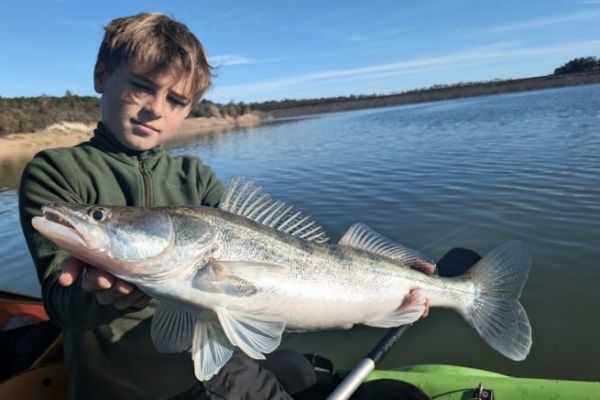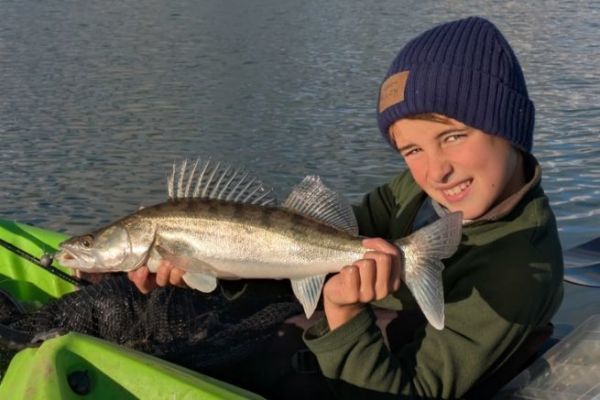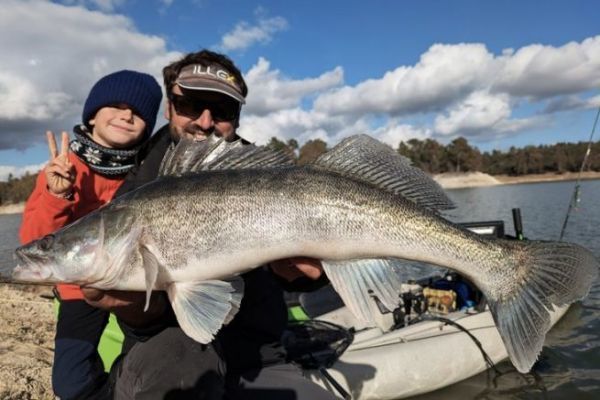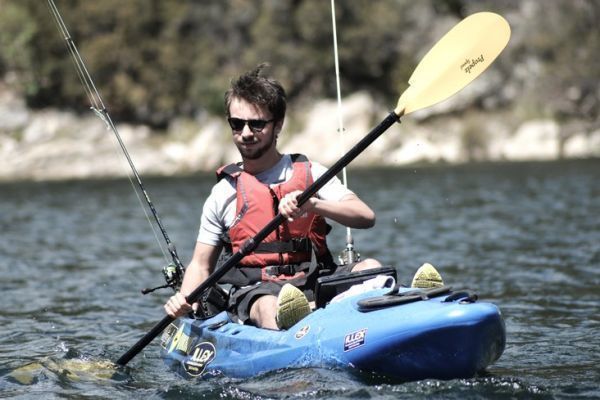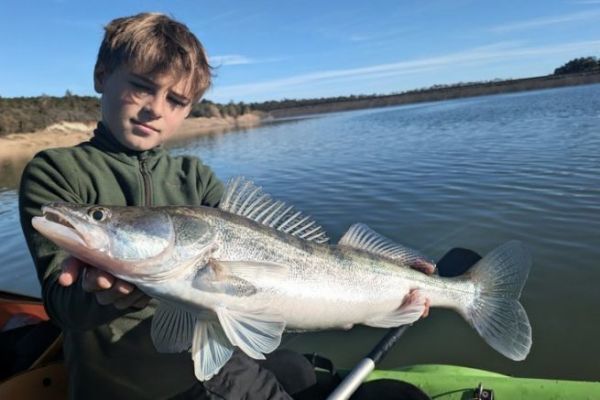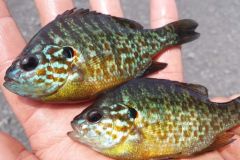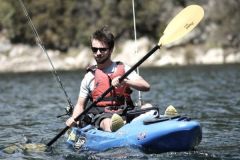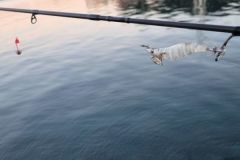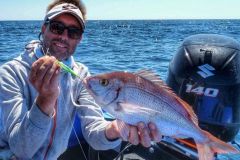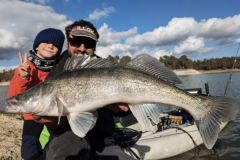Today, kayaks are highly relevant to lure fishing for predators. They allow you to fish effectively with a wide range of techniques, while offering their own particular efficiency in fishing action. Here are three types of fishing for which they particularly stand out:
Vertical fishing
Kayak fishing is particularly effective for vertical fishing. It allows very precise placement of the boat, while offering the possibility of travelling far and wide to find the right area. Placement is surgical, without being as intrusive as a float tube or as noisy as a rowboat.
The drifts are relatively easy to place. Working the lure in the sounder cone is easy for maximum efficiency. Searching for percids is exciting in a kayak. Plumbness is easy to maintain with a few strokes of the paddle or pedal. A floating anchor is a precious ally when the wind wrinkles the surface of the water. In addition to classic vertical fishing, kayak fishing can also be used for pelagic vertical fishing.
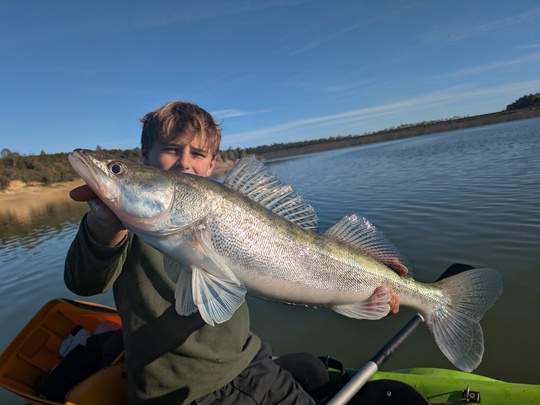
This means you can beat the ground in search of suspended echoes and you can quickly and accurately draw on an echo. A casting set allows you to control the lure at all levels and to retaliate on bites with a strong strike. A rod length of 1.90 m to 2.20 m is ideal for keeping the lure close to the kayak, but also for moving the line to the left or right of the kayak from the front, especially during fights.
A short heel is also an appreciable comfort for greater manoeuvrability and comfort, all the more so as the casting distances to be reached are often shorter and the lever arm can be dispensed with very easily.
Power fishing
It's not so much a technique as a method of fishing, i.e. beating as much ground as possible with lures that emit strong stimuli.
This method is particularly well suited to kayak fishing, as it allows you to cover a considerable fishing area.
By simply drifting along a bank or over a shoal, it's easy to spot active fish. Crankbaits (especially deep diving models), spinnerbaits and soft lures like shads, with their strong vibrations and visual signals, can quickly capture the attention of active predators.
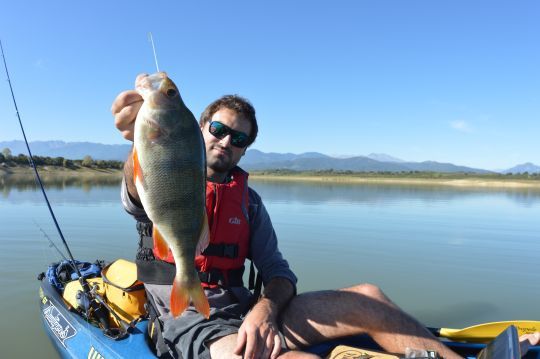
Here again, casting reels are particularly suitable and comfortable. The torque generated by casting reels (with rotating drum) allows you to bring in lures that pull hard through the line with a minimum of effort.
River fishing
It's well known that kayaks are very agile boats on rivers, especially those with relatively strong currents. They're ideal for navigating through turbulent waters and down long stretches of river in search of inaccessible fish. You can track trout on the water, but also chub, black bass, pike or even catfish under dense foliage.
The kayak allows a silent and precise approach to eddies, sills or marked spots. In my opinion, spinning rods are better suited to this type of fishing, as they allow you to cast with less movement (a flick of the wrist is all you need). Paddle kayaks combine sportiness and precise positioning for fishing with maximum comfort and safety on the river.
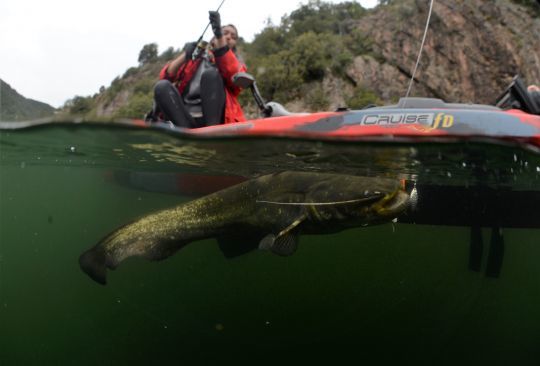
The shallow draught makes it possible to fish shallow spots, particularly in mid-mountain areas for trout. Before you set off, be sure to check the weather forecast (to avoid the risk of flooding in stormy weather) and avoid runs downstream of EDF dams, where the flow can vary dangerously.
Sharp Shooting
Developed recently with the arrival of "live" technologies, sharp shooting is formidable in kayaks. The kayak allows you to beat the ground while remaining silent, with a better cadence than a float tube and quieter than any electric motor.
The kayak allows you to follow a repeated fish and tackle it very precisely for a maximum chance of success.
In conclusion, as you can see, there are kayaks for every angler profile, from the most experienced to children. They offer all the advantages of a kayak, with excellent fishing performance and a sporty evolution on the water. They're a resolutely contemporary, environmentally-friendly and unobtrusive way to explore vast expanses of water.

 /
/ 